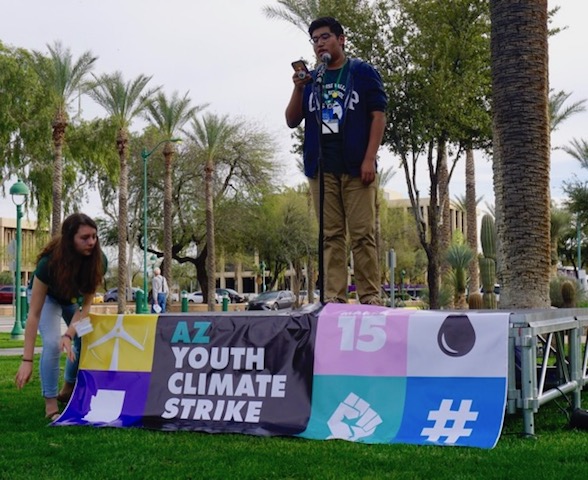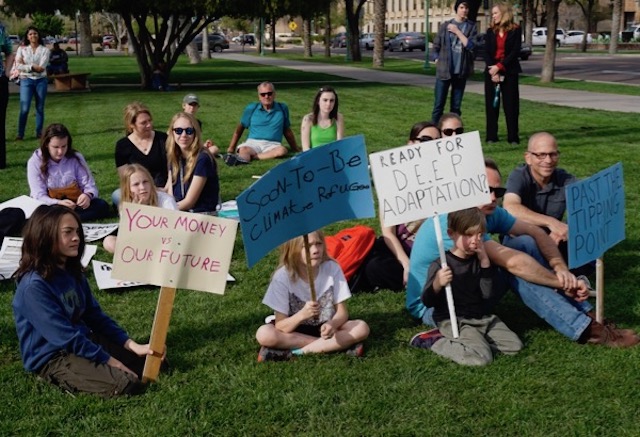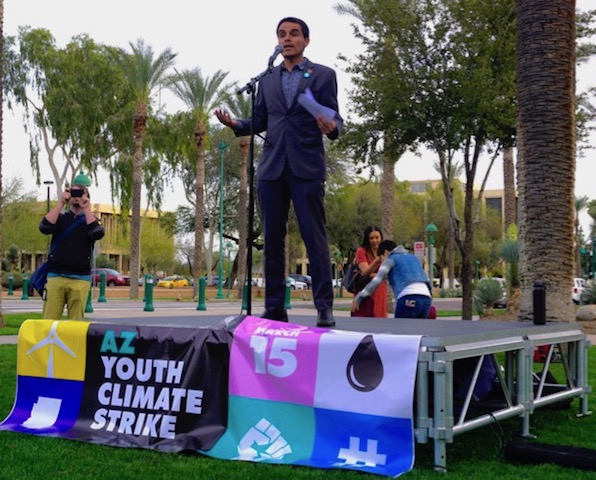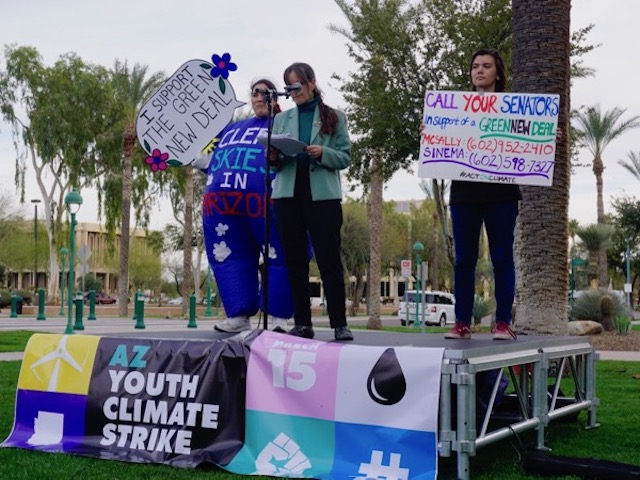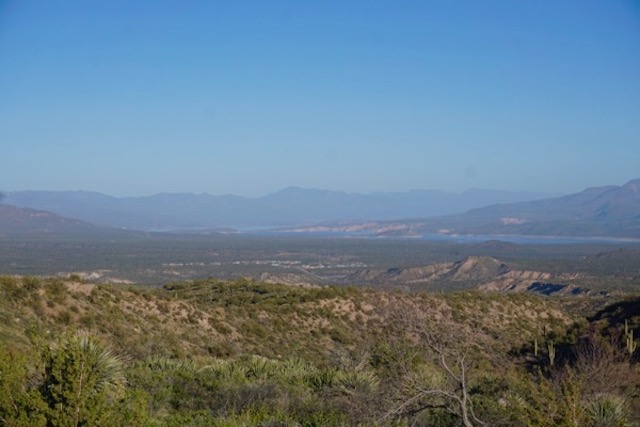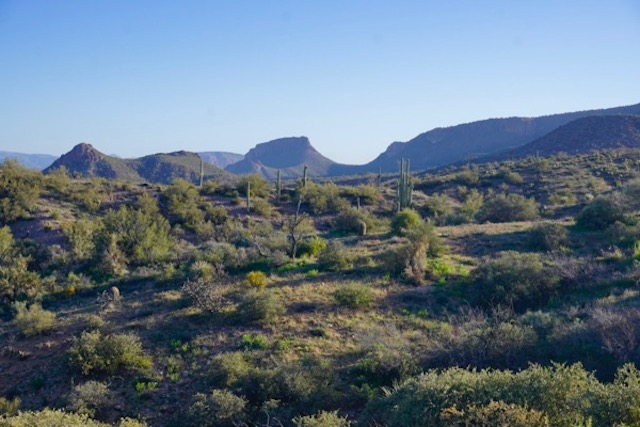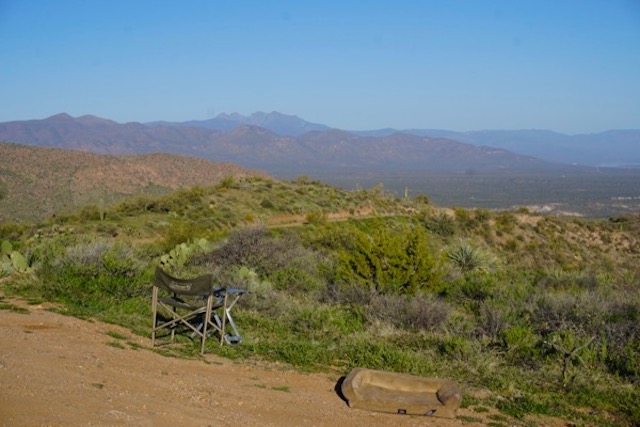FEMA: Flawed Rules Lead To More Flooding and Water Pollution
FEMA: DEP fails to address climate change risks and impacts
FEMA Echoes and Validates Our Criticism
Groundhog Day
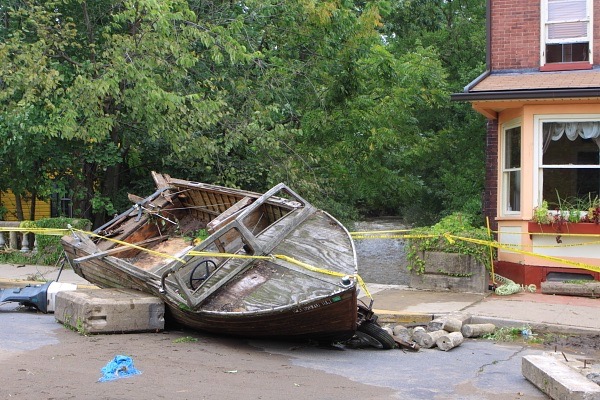
Lambertville, NJ (Hurricane Irene flooding, August 2011). Swan Creek in background.
In a January 31, 2019 letter (h/t Jeff Tittel, Sierra Club) the Federal Emergency Management Agency (FEMA) submitted harsh criticism of the Murphy DEP’s proposed new stormwater management rules.
FEMA described the DEP’s stormwater rules as
an important defense in preventing the exacerbation of the state’ most devastating risk: flooding.
FEMA prefaced their harsh criticism by noting that the federal government had expended more than $2.7 billion in NJ, thereby clearly linking the need for federal funding to DEP’s lax regulatory policies:
Coastal and riverine post-disaster support to New Jersey through Public Assistance and theHazard Mitigation Grant Program is nearly $2.7 billion to date- this does not include non-disaster funding through the Hazard Mitigation Assistance grant programs. These sizable contributions are indicative of New Jersey’s great exposure to flood risk.
The writing on the wall is obvious: NJ should not expect the federal FEMA gravy train to continue unless NJ strengthens their regulatory framework to reduce flood risks.
Meanwhile, instead of strengthening DEP’s flawed regulations, the Murphy administration has not only weakened current regulations, but also engaged in a distraction: a so called “coastal resilience” initiative. That sham initiative is the Murphy administration’s choice over far superior alternative policy frameworks, including: a Coastal Commission; State GHG emissions mitigation/climate adaptation planning and regulation; or a comprehensive set of enforceable DEP regulations (CAFRA, stormwater, Flood Hazard Act, C1, et al).
Repeating a disturbing pattern of news management, the Murphy DEP issued another cynical and diversionary press release today on “coastal resilience” grants, cynically in the hope of diverting media focus from the FEMA criticism.
In a prior egregious episode of similar news management, we noted:
The McCabe DEP press release was issued the same day that McCabe was personally slammed in a Newark Star Ledger editorial and harshly criticized again in testimony later that morning in a Senate legislative hearing on illegal disposal of “dirty dirt” (see S1683). That DEP press release was a blatant diversion to cover up McCabe’s own serious failures.
Sadly, that DEP news management diversion may work. The press is extremely weak on regulatory issues and the so called environmental advocates are in the tank with the Murphy administration.
The DEP isn’t the only one ignoring these major flaws in regulations – the press repeatedly has failed to hold DEP accountable. The latest example of that media failure is today’s NJ Spotlight story, which again focuses on flawed US ACE engineering approaches to the coastal zone, instead of the major risks and flaws flagged by FEMA and environmentally superior and cost effective alternatives, like a Coastal Commission or DEP regulations.
FEMA flagged many significant and fatal flaws in the DEP proposal: (emphasis mine)
To highlight, FEMA finds that the abandonment of the nonstructural stormwater management in design and the absence of restrictions in the increase in runoff volume post-development to be significant deficiencies. FEMA is also concerned that the proposed rule does not consider future conditions of increasingly intense precipitation that is expected with climate change. The use of the term Green Infrastructure will not offset the proposed changes to the nonstructural stormwater management strategies and the multiple missed opportunities to reduce riverine and urban flooding impacts.
Wow! FEMA found “significant deficiencies”. FEMA noted that the “green infrastructure“ cover slogan “will not offset” the rollbacks!.
Let’s repeat that – THE DEP PROPOSAL:
does not consider future conditions of increasingly intense precipitation that is expected with climate change.
You rarely get that kind of strong criticism from a federal regulatory agency. That should give folks a sense of just how bad the DEP proposal is.
FEMA also blasted these fatal flaws:
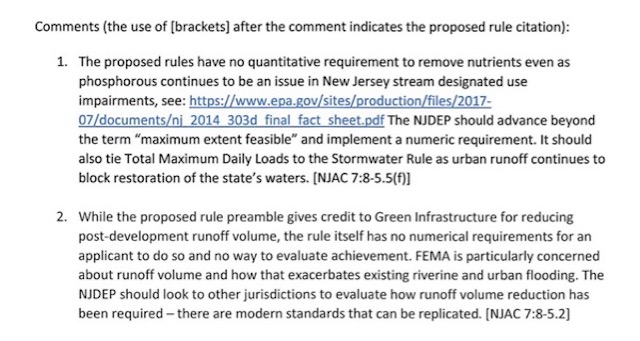

FEMA saved the best for last, and blasted DEP’s failure to consider current science and address climate change increased rainfall:
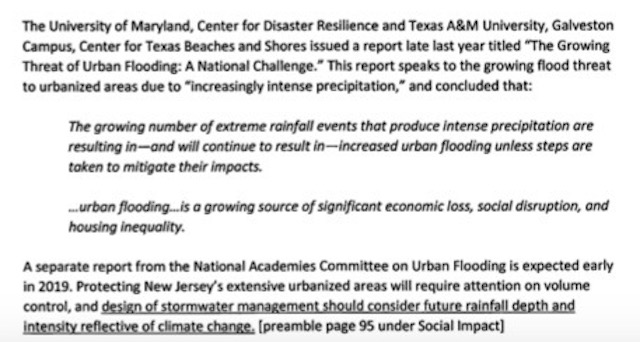
What ever happened to the DEP policy to begin to regulate based on the 500 year storm event to address climate change, see:
“It’s extremely significant,’’ said Bill Wolfe, director of the New Jersey chapter of Public Employees for Environmental Responsibility, who first reported the changes on his blog, wolfenotes.com. “It will make a difference.’’
Is DEP Commissioner McCabe even aware of this? If so, why did she sign off on such a clearly deficient – and technically inconsistent – rule proposal?
FEMA criticized many of the same issues were wrote about in this December 14, 2018 post, including failure to address climate change, lack of numeric enforceable water quality standards, and repeal of current nonstructural stormwater management requirements:
The only solution at this point in time is for DEP to rescind the proposal – there is no time to simply allow it to expire after one year – and go back to the drawing board and start over on a proposal that addresses FEMA criticism.
Folks, it’s Groundhog Day again:
Here’s what we warned the public, over 12 years ago, – 6 years before Sandy – on September 25, 2006:
Numerous scientific studies and NJDEP Reports show that the over-developed NJ shore is increasingly vulnerable to hurricane and storm related wind, storm surge, and flooding damage. Those risks are magnified by the effects of global warming induced sea level rise. NJ already is among the worst states in the nation for payouts on repeat claims under the federal flood insurance program. While risks are great and growing, DEP’s own studies show that public awareness is low, and local and state disaster planning and emergency response capabilities are woefully inadequate.
Despite these significant risks, continued over-development, particularly in known high hazard areas along the shore, puts more people and property in harms way, greatly increasing not only risks to life and property. The probability is increasing for a catastrophic coastal storm event that would cause huge economic dislocation.
We repeated that warning in a November 16, 2009 post – 3 years before Sandy – where we excerpt text from DEP’s own Coastal Management Strategy, science and policy that they repeatedly ignored and failed to enforce. Read what DEP’s federally approved Coastal Zone Management plan actually says (you won’t read it in the press or hear it whispered from lips of NJ’s lame coastal advocates):
Titus demonstrates (link) that in certain instances, structural engineering solutions will not be practical or economically feasible. In these cases future public and private development and redevelopment must be directed away from the hazardous areas. While some derogatorily refer to this option as “retreat,” from the perspective of sound planning based on the best available science, the concept actually involves “strategic adjustment.” Prudent planning requires that we expand upon the existing studies of the societal, economic, and environmental costs of possible mitigative actions while the greatest number of alternatives exist.
The state’s coastal area continues to experience substantial seasonal and residential population increases. Conversion of formerly seasonal homes to year-round residences continues unabated. In many instances, formerly modest houses are replaced with significantly more expensive homes while property values continue to escalate.
At the same time, risks associated with coastal hazards continue to increase. Factors such as escalating sea level rise and cyclical and possibly long-term increases in storm frequency and intensity threaten both the natural environment and built environment of New Jersey’s coast. Consequently, the ranking of the Coastal Hazards Section 309 enhancement area remains a high priority with the NJCMP. [end excerpt – link to complete DEP document below]
Ironically, the houses in the photographs in that post were destroyed by Superstorm Sandy, including the summer house of one of my best friends.
So, in light of these mounting risks and DEP’ abject failures, where are the coastal advocacy groups?
They are safely “in the room”, posing as “stakeholders” in DEP’s sham coastal resilience initiative, kissing Gov. Murphy and DEP Commissioner McCabe’s ass, and seeking more DEP grant funding for their organizations.
